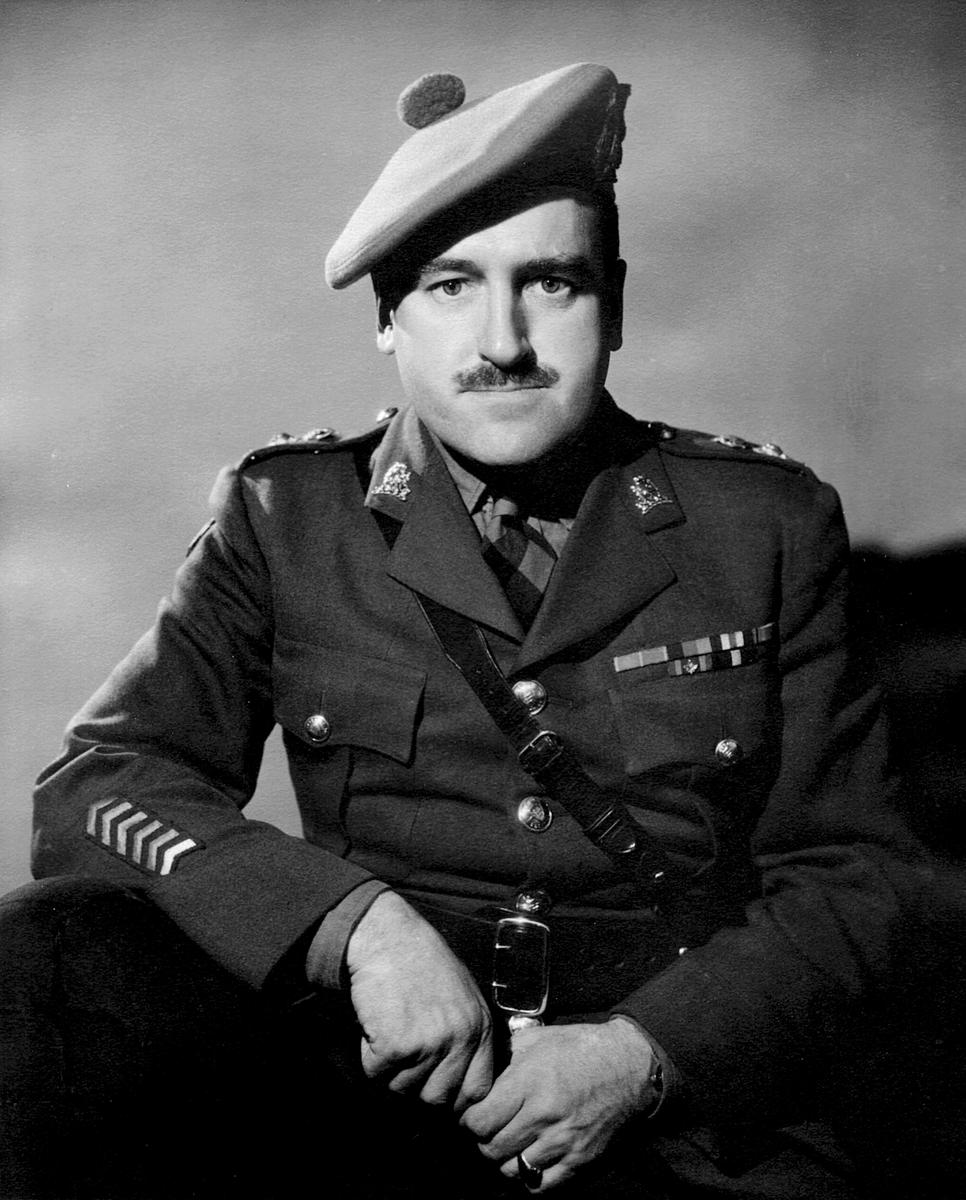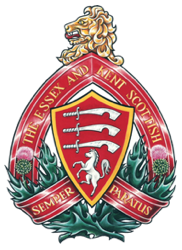Lieutenant-Colonel Bruce Macdonald and Operation ATLANTIC

Black and white portrait of Lieutenant-Colonel Bruce John Stewart Macdonald.
With his professional and leadership skills displayed while in the Essex Scottish, and his work as a prosecutor during the post-war Nuremburg Trials, Lieutenant-Colonel Bruce John Stewart Macdonald created an important link between the worlds of civilian work and the Canadian military. Trained as a lawyer, Macdonald attended the University of Alberta and later finished his formal education at Harvard Law School. Macdonald moved to Windsor, Ontario in 1927 to pursue a legal career and soon joined The Essex Scottish in the Army reserve. When war was declared in September 1939 against NAZI Germany, he re-enrolled as a major in the Canadian Army Special Force (CASF). Later, he would achieve the rank of Lieutenant-Colonel and command the regiment in battle.
In late 1942, Macdonald became the Chief Instructor of the 4th Canadian Infantry Brigade Battle School in England. Macdonald instructed and coordinated the training and exercises at the Battle School. Macdonald’s goal was to increase parades, training and sub-unit inspections to improve discipline in his brigade after the catastrophic events of Dieppe on 19 August 1942. Later in 1943 and 1944 as Commanding Officer, Macdonald encouraged both high spirits and strict discipline in his men to prepare for the operations in France.
Lieutenant-Colonel Macdonald was keen to show off the unit's freshly acquired battle skills. During the lead-up and events of Operation ATLANTIC, Macdonald and Brigadier Hugh A. Young, Commander 4th Brigade were at odds on the conduct of the battle. Both men failed to demonstrate effective communication and patience with one another.
As Commanding Officer of the Scottish during Operation ATLANTIC on 19 and 20 July 1944, Macdonald was ordered to support the 6th Infantry Brigade advance toward the German-occupied Verrières Ridge, south of Caen. However, the circumstances for the Canadian infantry placed them in an untenable situation as the German defenders were believed to be able to view Canadian advances from both the north and south of the occupation zone. The Essex Scottish mission was to move behind the South Saskatchewan Regiment (SSR), establish a fortified position behind the forward units then "leapfrog" the SSR if their attack was successful.
Subsequently, the SSR and the Scottish were unprepared for the German counterattacks by infantry and tanks. There were external circumstances which contributed to the operation’s failure. It had been reported that Lt Col Macdonald requested additional armour from Young to support his men but did not receive it. Furthermore, unpredictable weather disrupted the planned artillery and supporting aerial bombardment. The men of the Essex Scottish and South Saskatchewan units retreated in disarray.
After the events of Operation ATLANTIC, Lt Col Macdonald was blamed for the failure of his battalion. Consequently, Brigadier Young submitted a report putting responsibility for the failure and substantial casualties of the operation on Macdonald. The report stated that “Macdonald had failed to control his men, and nervousness, seeming to breakdown, and the men’s lack of confidence in him.” The report was reviewed by the division commander and subsequently it was decided to relieve Macdonald of his command. Nevertheless, Macdonald requested to have his case reviewed and be reinstated as commanding officer.
It would take many months for the case to be reviewed. By the time it was up for review, Macdonald had been tasked by the Canadian Government to act as Chief Prosecutor in the trial of German SS General Kurt Meyer for war crimes committed in June 1944 at the Nuremburg Trials. Despite his role in Operation ATLANTIC, Macdonald remained highly regarded by the Essex Scottish officers and soldiers as illustrated by his appointment as Honorary Lieutenant-Colonel of the Regiment from 1971 to 1980.
After the war, Macdonald would be recognized for his work in the 1946 Nuremberg Trials and be awarded the Order of the British Empire (OBE), the Croix de Guerre (France), and the Efficiency Decoration. In 1946, Macdonald would return to private practise as a lawyer in Windsor with the Wilson and Thomson law firm.
On 1 April 1956, Macdonald was appointed as Crown attorney for Essex County. By coincidence, on the same date, Macdonald became a member of the Windsor Police Commission and would later become the Commission’s chairman. In addition to his membership of the Windsor Police Commission, he was also a member of the Amherstburg, Leamington, Sandwich West Police Commissions. Macdonald would soon be the President of the Association of Municipal Police Governing Authorities of Ontario.
In October 1961, Macdonald was appointed the Judge of County and District Courts of Ontario until he retired from the bench in December 1977. But he was not done; he became a judge of small claims court where he presided until his death on 2 June 1986.
Story by Taylor Blackmere Canada Summer Jobs 2022 participant
with The Essex and Kent Scottish Regiment Association
Sources
- Duty Nobly Done, The History of The Essex and Kent Scottish Regiment by Sandy Antal and Kevin R. Shackleton, 2006: Chapter 12
- Canada's Chief War Crimes Prosecutor Lived Here by Anne Jarvis, 2017
- Bruce J.S. Macdonald Fonds by Paul Leatherdale, Windsor, 1997
- The Essex Scottish Regiment in Operation Atlantic: What Went Wrong? by John Maker in Canadian Military History 18, 1 (2009).
- The MacDonald Papers - Essex Scottish Regiment at The Windsor Public Library, n.d.

Lieutenant-Colonel Bruce John Stewart Macdonald and the Bn. Headquarters and H.Q. Company 1st Battalion. The Essex Scottish Regiment. Photo taken in England, November 1943.
